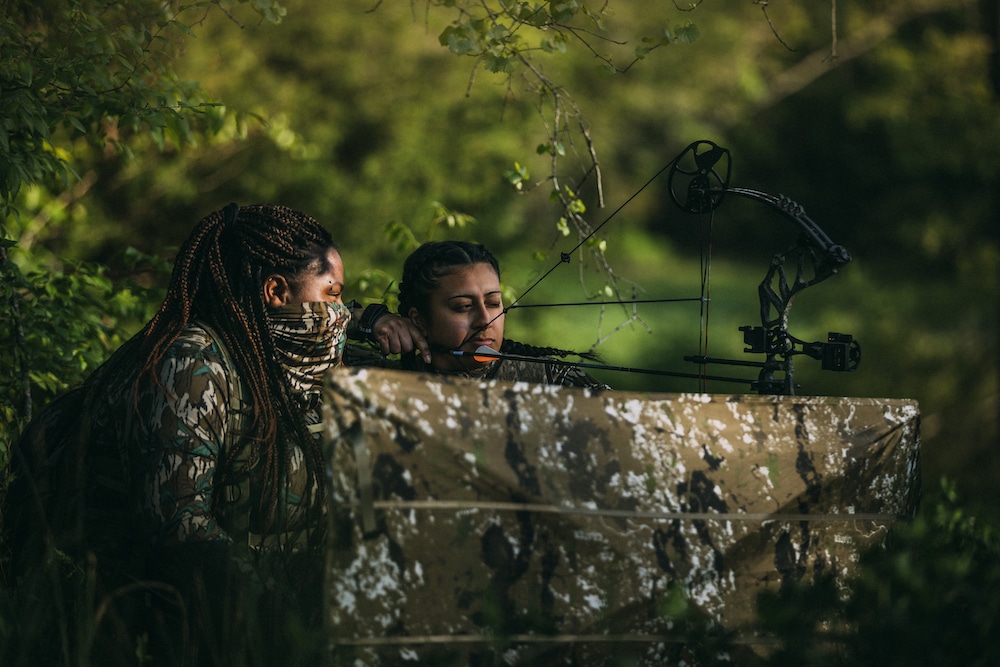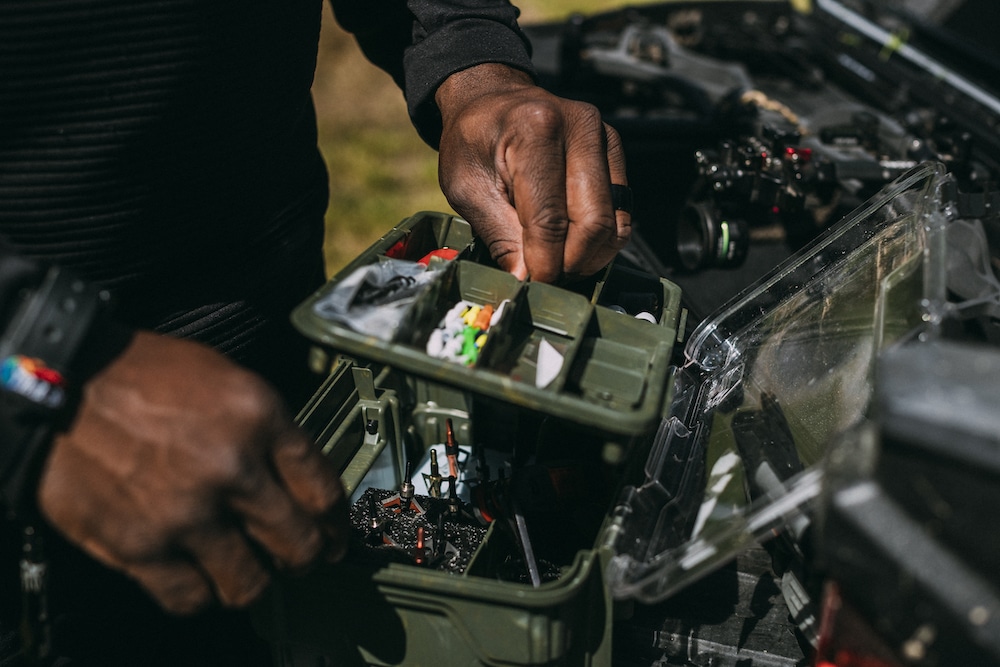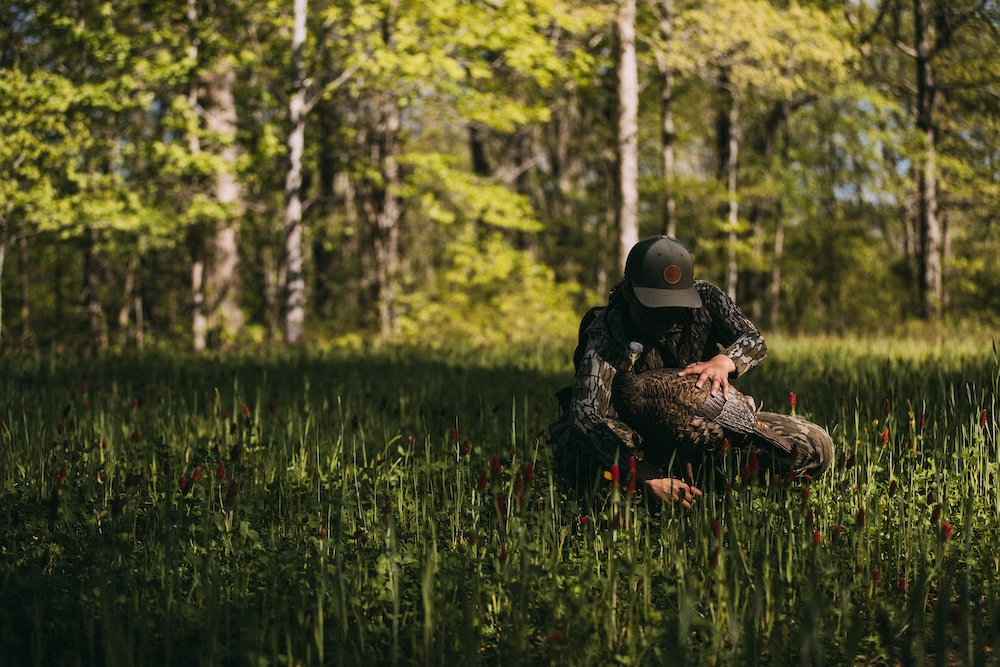If you’ve taken deer or other big game with a bow and are now considering trying for turkeys, you should be in good shape. Most archery equipment suited to whitetails will work just fine for turkeys.
However, bowhunting for turkeys does differ somewhat from hunting four-legged game.
You may be accustomed to chasing bucks while perched in a tree, but you’ll likely pursue gobblers from the ground. What’s more, you’ll probably want to use a blind to conceal your draw motions from those prying turkey eyes. A pop-up blind is your best bet for total concealment. Unlike whitetails, which are usually wary of newly placed blinds, turkeys will typically ignore a blind that has suddenly appeared on the landscape.
There are a few drawbacks to fully enclosed blinds, however. You’ll need a blind that’s tall enough and wide enough to allow you to come to full draw. And you’ll have to shoot from a sitting or kneeling position, which is unfamiliar to many archers. To accommodate twisting and contorting for a shot in a small space, you might consider using a full-capture rest to keep your arrow in place. Shoot-through windows will work fine if you’re shooting a fixed-blade broadhead, but you’ll need open windows if you’re shooting an expandable.

You can hunt turkeys from an enclosed blind, from behind mesh netting, or on foot. Photo Credit: Bowhunters United
An enclosed blind isn’t required for bowhunting turkeys. You could use staked mesh netting, which gives you infinite room vertically, but you’ll have to shoot over the top of it, potentially exposing yourself to a gobbler’s hawklike vision. A blind made from natural cover, like fallen logs, is another possibility, although you’ll be stuck in one spot.
No matter what style blind you hunt from, shooting at ground level also increases the chance of contacting grass, brush or limbs that could deflect your arrow, and so some hunters make changes to their setup. You can use the same bow for turkeys that you use for larger game, but some die-hard turkey hunters specifically choose bows with shorter axle-to-axle lengths. One tweak everyone should make is to lower the draw weight, allowing you to hold at full draw longer. Turkeys are wary and you need them to be close, so you might have to hold at full draw for a while as you wait for a good shot.

Chose broadheads that will be the most effective for a turkey’s small vital area. Photo Credit: Bowhunters United
Broadheads are another consideration. As with deer, you can choose from fixed-blade or mechanical heads, but guillotine-style heads are an option, too. These heads are designed for lopping off a bird’s head when they hit the neck — something you certainly wouldn’t try with a deer! A neck shot is positively lethal if you connect, but it leaves no room for error. A body shot gives you a larger margin for error, although a turkey’s vital area is still quite small. It doesn’t take a pass-through or a lot of arrow velocity to kill a turkey. What you really want is to break bones and create massive hemorrhaging to kill the bird quickly. An expandable head dumps some of its energy into the body cavity, making it an ideal choice, although a well-placed fixed blade is certainly lethal. It’s a matter of personal preference.

Place turkey decoys strategically near your blind. Photo Credit: Bowhunters United
Because turkeys are small, fidgety targets, you’ll want your shots to be close — 20 yards or less is ideal. Decoys are a great help. They distract a turkey’s attention away from you, and you can position them so that an approaching gobbler gives you an ideal shot angle, since toms usually approach a hen from behind and a rival jake from the front. Some hunters like a broadside shot because it’s the largest target; some like to shoot a strutting turkey from the rear because the fan conceals their movements. Don’t point the decoys at you; a live bird may follow their gaze and pick you off.
Turkeys can’t smell you, so you don’t have to worry about the wind direction — but you do have to beat their incredible eyesight. To fool a wary gobbler at close range, you’ll have to be extremely careful to draw only when the gobbler can’t see you. The problem is exacerbated when multiple birds are in the area. In addition, you’ll need top-notch camo. A gobbler might even pick out your colorful fletching, so make sure all your equipment is drab colored.
Bowhunting for turkeys does have its nuances but overall, hunting is hunting. To be successful, you still need to practice shooting, scout for game and, above all, use camouflage to conceal your body and your movements. If you’re already set up to chase deer or other big game, it won’t take much extra effort to become a real turkey predator.